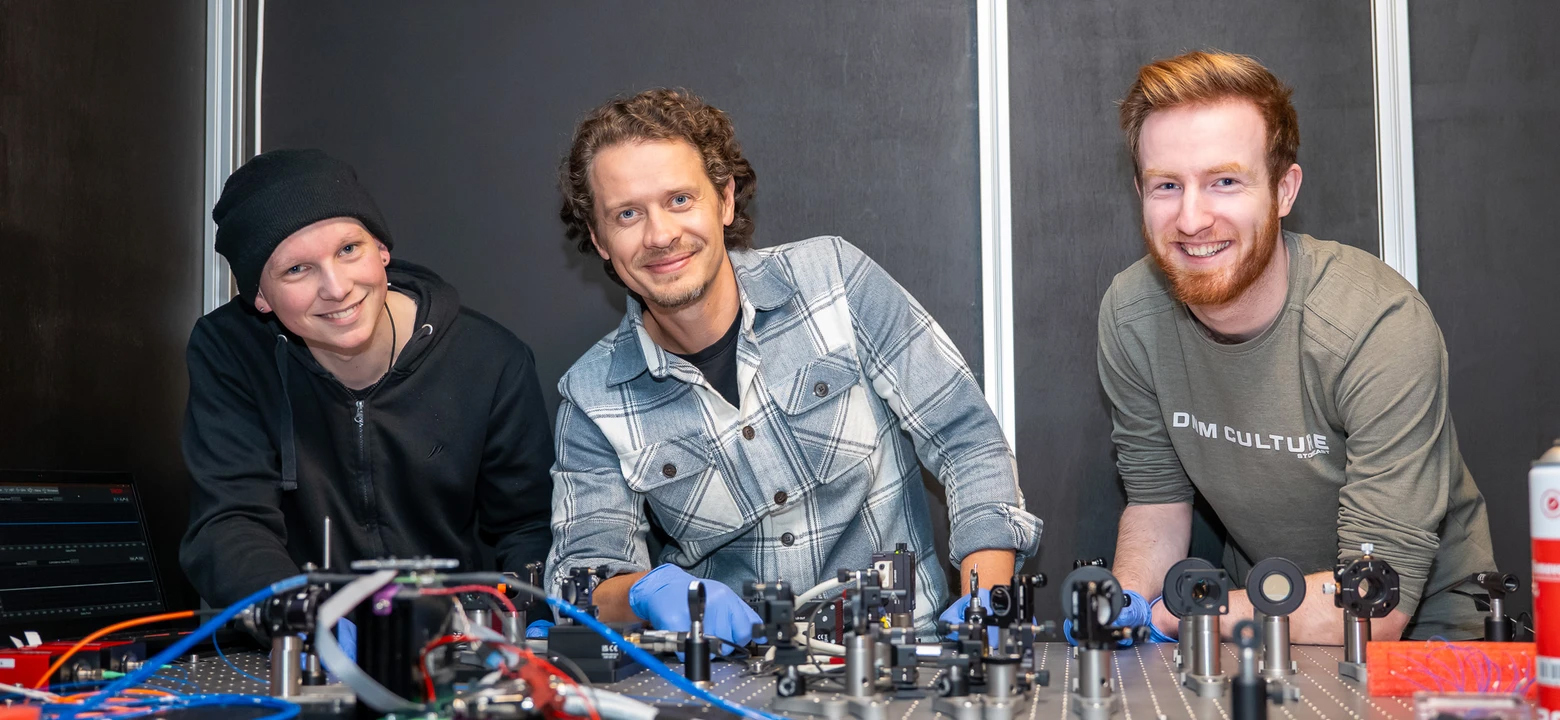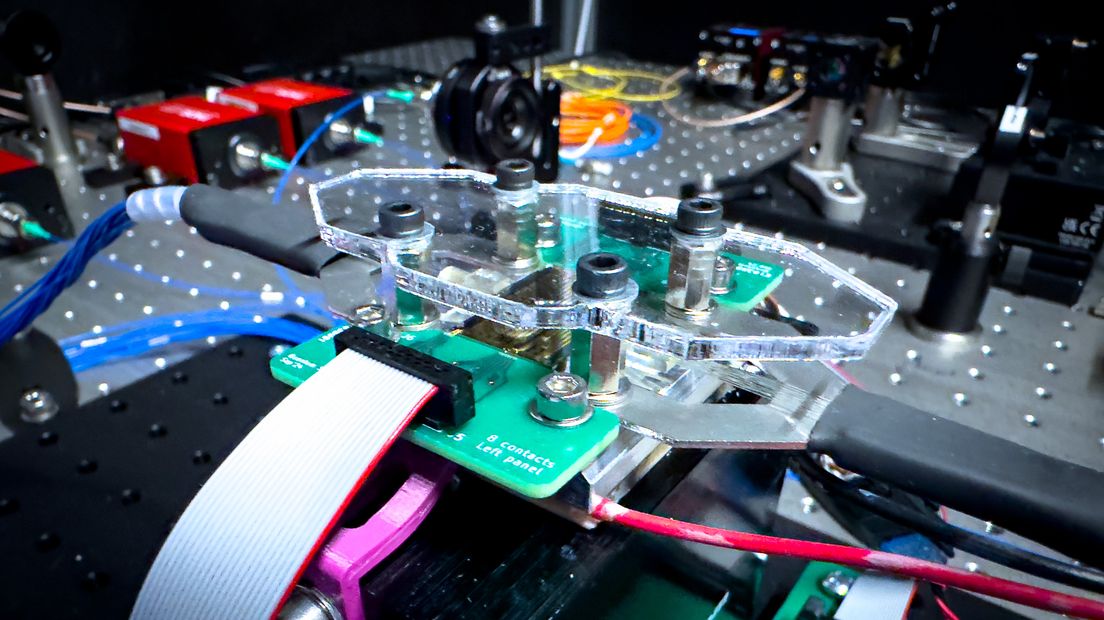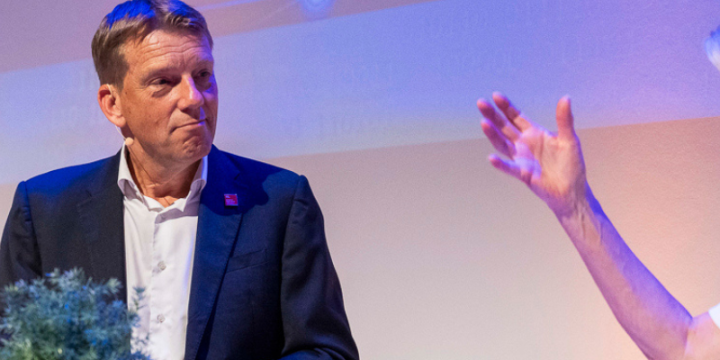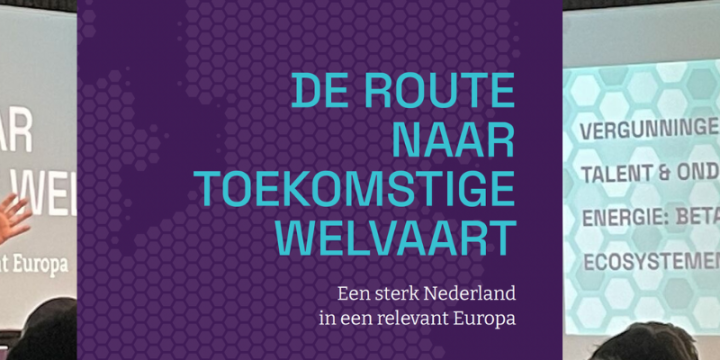Integrated photonic technology enables calculations with light on a chip, similar to how modern microchips perform calculations with electrons. Even more remarkable is that photonic processors can operate with light at the fundamental quantum level, stimulating rapid developments in photonic quantum computing. The Applied Nanotechnology research group at Saxion is conducting research into this. They are developing and building a working demonstration setup for the key technology quantum technology, using another key technology, photonics. They are collaborating with Quix Quantum and receiving support from the Quantum Delta NL Growth Fund program.
Challenge
The challenge for the Saxion researchers was to create a working demonstration setup for a photonic quantum processor.
Caterina Tabalione, Commercial & Partnership lead, QuiX Quantum:
Photonic integrated circuits are essential for quantum computing. These circuits present all sorts of challenges. But to start, you could use a chip to train students and help them understand what's happening at the quantum level. You could set up a few experiments to show them. Something like that is also useful for us, because we want to know which chips are good and which are bad.
Results
Within the research group Applied Nanotechnology of Saxion, in collaboration with industrial partners QuiX Quantum and Quantum Delta NL, an experimental quantum computer setup has been developed and built. This setup is based on a programmable photonic chip. Crucially, this chip can perform simple quantum operations and measurements at room temperature, eliminating the need for expensive cooling systems. Furthermore, commercially available components were used in the setup, making it highly accessible and affordable. For example, a relatively inexpensive BBO crystal was used as a source for single photons and detectors based on photodiodes from standard silicon technology.
Dmytro Polishchuk, Projectmanager en Senior researcher research group Applied Nanotechnology, Saxion:
Effective quantum developments require specific technological knowledge and practical skills, which take years to develop. By working on these kinds of projects, we can not only keep this foundation up-to-date but also utilize it in research projects with our partners and in training our students.
Starting from the bare photonic chip provided by QuiX Quantum, the necessary supporting subsystems were developed entirely in-house by the research group. These included the electrical control, temperature regulation, and mechanical construction. After assembly, the system was first successfully tested in the classical regime, among other things to demonstrate the controllability of light, and then in the quantum regime. This involved the use of a single-photon source and specialized detection schemes based on coincidence measurements (in which two photons are detected simultaneously).
Finally, standard quantum experiments were performed with the chip, specifically single-photon interference (the quantum equivalent of the double-slit experiments from classical optics). At the time of writing, the setup is being prepared to measure Hong-Ou-Mandel interference with the chip. This effect is the cornerstone of photonic quantum computing.
 |
The setup with the developers, from left to right: Levi Munk (Electrical Engineering graduate, ROC van Twente), Dmytro Polishchuk (Senior researcher and Project Leader Applied Nanotechnology, Saxion), Jaron Leene (Intern Applied Physics, Saxion) (Photo: Thomas Busschers).
Because the setup was designed from the ground up for a high degree of adaptability and broad applicability, it can be used as a testbed for various photonic solutions for quantum computing. Combined with the acquired knowledge and experience, this forms a perfect starting point for developing practical solutions for real-world quantum applications in future projects. Also, students are closely involved in these developments, therefore it ensures excellent training for new talent.
|
|
Photonic quantum processor setup at Saxion. A photonic chip (center) forms the heart of the setup, where the "quantum magic" takes place. The chip is surrounded by electrical and optical connections. Visible in the background are the other optical components (top right) and the photon detectors (top left). Both are essential for the operation of the entire setup (Photo: Thomas Busschers).
Follow-up
The developed setup can be used, in close collaboration with industrial and academic partners, as a technical basis for further research into problems related to integrated photonic quantum technology. Several new research projects are already planned. One of these, in collaboration with QuiX Quantum and PhiX, involves further developing the current setup into a compact and therefore portable demonstrator for educational and outreach activities. The research group hopes this will make the technology more visible and more widely applicable.
Partners
The project is being carried out within the Applied Nanotechnology research group at Saxion by researchers Dmytro Pulishchuk and Tjeerd Bollmann, and senior lecturer Cas Damen.
Quix Quantum is involved as a partner from the SME sector, while the Quantum Delta NL Growth Fund program also provides partners and funding.
Tjeerd Bollmann, Senior researcher and lecturer, research group Applied Nanotechnology, Saxion:
Integrated photonics is a key technology that brings the necessary precision and scalability within reach for realistic quantum solutions. The demonstrator for a photonic quantum processor, developed in close collaboration between our university of applied sciences and QuiX Quantum, demonstrates the power of uniting research and industry to advance quantum computing.






